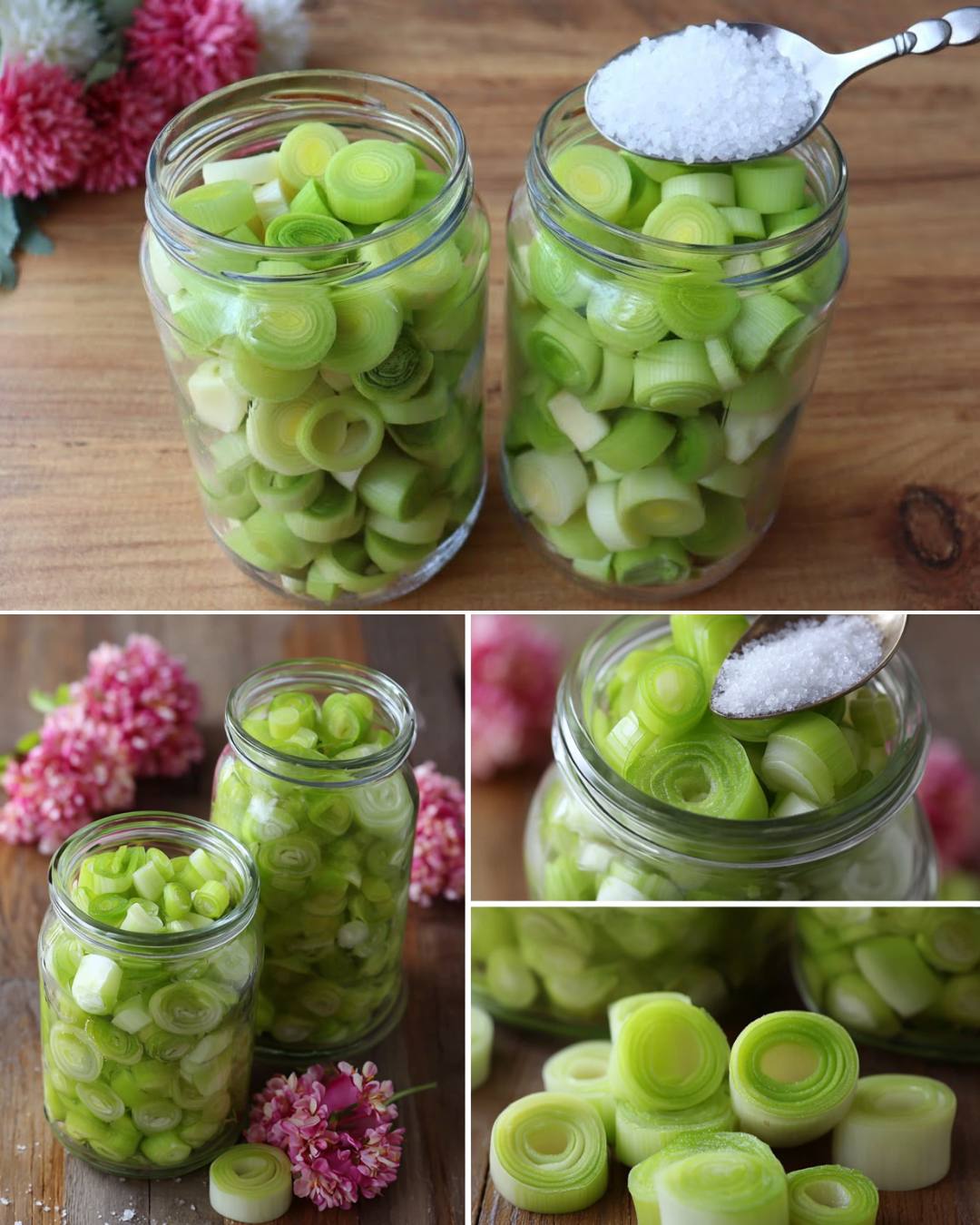Traditional Pickled Leeks Recipe

Discover the age-old tradition of preserving fresh leeks through quick pickling, a method that transforms this mild allium into a tangy, crunchy condiment bursting with flavor. This simple preservation technique requires just a handful of ingredients and creates a versatile pickle that enhances sandwiches, salads, cheese plates, and main dishes. The combination of leeks and garlic in a lightly salted brine develops complex flavors over time while maintaining the vegetables’ crisp texture. Unlike complicated fermentation projects, this quick pickle is ready in just two weeks and stores beautifully for months. Whether you’re looking to preserve a bumper crop of leeks or simply want to add homemade pickles to your pantry, this traditional recipe delivers authentic taste with minimal effort.
Ingredients
- 7-8 medium leeks (about 1kg/2.2 lbs)
- 1 head garlic, cloves separated and peeled
- 1 liter (4 cups) filtered or boiled drinking water, cooled
- 2 tablespoons coarse rock salt or pickling salt (30g/1 oz)
- 4 tablespoons apple cider vinegar (60ml/2 fl oz), divided
Instructions
Step 1: Prepare the Leeks Thoroughly wash the leeks under cold running water, separating the layers to remove any dirt or sand. Trim off the dark green tops and root ends, keeping the white and light green portions. Slice the leeks crosswise into rounds approximately 1-2cm (½ inch) thick. Don’t make them too thin or they’ll become mushy, and avoid cutting them too thick or they won’t pickle evenly.
Step 2: Prepare the Garlic Peel the garlic cloves and cut each one in half lengthwise. This releases more flavor into the brine.
Step 3: Sterilize Jars Place two 500ml (1 pint) glass jars and their lids in a large pot of boiling water for 10 minutes to sterilize. This crucial step kills bacteria that could spoil your pickles. Remove carefully with tongs and let air dry on a clean kitchen towel.
Step 4: Pack the Jars Divide the sliced leeks and halved garlic cloves evenly between the two sterilized jars, packing them loosely but filling the jars nearly to the top. Leave about 2cm (¾ inch) of headspace.
Step 5: Make the Brine In a clean container, combine 1 liter of filtered or previously boiled (and cooled) drinking water with 2 tablespoons of coarse rock salt. Stir well until the salt completely dissolves.
Step 6: Fill the Jars Pour the brine into each jar, covering the leeks and garlic completely while leaving about 1cm (½ inch) of space at the top. Make sure all vegetables are submerged.
Step 7: Add Vinegar Add 2 tablespoons of apple cider vinegar to each jar. The vinegar adds acidity and flavor while helping preserve the pickles.
Step 8: Seal the Jars Wipe the jar rims clean with a damp cloth to ensure a good seal. Close the jars tightly with the sterilized lids.
Step 9: Initial Mixing Gently shake or turn the jars upside down a few times to distribute the salt, vinegar, and garlic evenly throughout.
Step 10: Store and Wait Place the jars in a cool, dark, dry location away from direct sunlight. Room temperature is ideal. Let the pickles ferment for 15 days. During the first few days, shake the jars once daily to redistribute the ingredients.
Step 11: Check and Store After 15 days, your pickled leeks are ready to eat. Once opened, store in the refrigerator and consume within 2-3 months. Unopened jars can be stored in a cool, dark place for up to 6 months.
Time and Servings
Prep Time: 20 minutes Fermentation Time: 15 days Total Time: 15 days 20 minutes Yield: 2 x 500ml jars (approximately 16 servings)
Nutrition Per Serving (¼ cup): Approximately 15 calories, 0.5g protein, 3g carbohydrates, 0g fat, 1g fiber
Why Pickled Leeks Are Beneficial
Pickled leeks offer numerous health advantages beyond their delicious taste. Leeks belong to the allium family and contain beneficial compounds including antioxidants, vitamins A, K, and C, and minerals like iron and manganese. The pickling process preserves these nutrients while potentially creating beneficial bacteria if naturally fermented. Garlic adds allicin and other sulfur compounds known for immune-supporting properties. The fermentation or pickling process may enhance digestibility and can contribute to gut health. Leeks are naturally low in calories but high in fiber, supporting digestive health and promoting feelings of fullness. The addition of apple cider vinegar provides acetic acid, which some research suggests may help with blood sugar regulation. This preservation method allows you to enjoy seasonal vegetables year-round while reducing food waste and avoiding the preservatives and excess sodium often found in commercial pickles.
